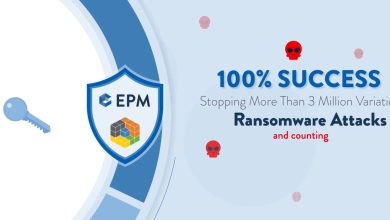Info-Tech Research Group Asserts That Remote Work Needs a Redesigned Enterprise Network for Enhanced Security and Connectivity

Global IT research and advisory firm Info-Tech Research Group has published its newest research-backed blueprint, titled Enterprise Network Design Considerations. This research is timely, given the growing number of remote users and services provided “off network” contributing to the rapidly escalating enterprise security threats. Info-Tech’s blueprint will help security and IT leaders develop a network design that considers more than just connectivity to address these concerns while delivering business value.
Security, risk, and trust models are factors IT teams need to consider when designing and deploying an enterprise network. If these models are not considered during network design, band-aids and workarounds will be deployed to achieve the needed goals, potentially bypassing network controls. Many enterprises still use traditional networks, which commonly include comprehensive firewalls and dedicated hardware devices such as switches and routers to control data traffic but have limited security.
With the increasing amount of work that the business is completing remotely, not all devices and data paths will be under the control of IT. However, this shift does not allow IT to abdicate from the responsibility to provide a secure network. Info-Tech’s research indicates that the cloud “gold rush” has made it attractive for many enterprises to migrate services off the traditional network and into cloud-based services such as inverted perimeter or hybrid networks for better security and connectivity.
An inverted perimeter network is one in which security and control points cover the entire workflow, on or off net, from users to the services themselves, with a zero-trust principle. Since the control plane is designed to encompass the workflow in a secure manner, much of the underlying connectivity can be abstracted.
The firm’s research also suggests that an inverted perimeter network model is extremely attractive for organizations that primarily consume cloud services and have a large remote workforce.
A hybrid network combines elements of a traditional network with cloud resources. As some of these resources are not entirely under the control of IT and may be completely off net or loosely coupled to the on-premises network, the security boundaries and control points are less likely to be centralized. Hybrid networks allow the flexibility and speed of cloud deployment without leaving behind traditional network constructs but are generally more costly to secure and maintain.
“A network archetype needs to be defined to understand what tools are appropriate for consideration in a network build or refresh,” says Scott Young, Principal Research Advisor in Info-Tech’s Infrastructure Research Practice. “These tools, which are purpose-built and generally designed to solve specific problems, must be chosen appropriately to align with the organization’s challenge.”
Info-Tech recommends security and IT leaders understand the needs of the business before choosing a network design for the organization. The new blueprint highlights the factors that should be considered when trying to understand business needs, which include:
- Mission: Consider the mission and vision of the business to address relevant needs.
- Users: Identify where users will be accessing services; Remote vs. “on net” is a design consideration now more than ever.
- Resources: Identify the required resources and their locations: on net vs. cloud.
- Controls: Identify the required controls in order to define control points and solutions.The blueprint also contains insights and direction for IT leaders on other key topics, such as archetypes and tooling, hybrid and inverted networks, and cloud access security brokers (CASB) and secure access service edge (SASE).
The complete Enterprise Network Design Considerations blueprint can be downloaded and viewed now.
To learn more about Info-Tech Research Group and to download the latest research, visit www.infotech.com and connect via LinkedIn, Twitter, and Facebook.




